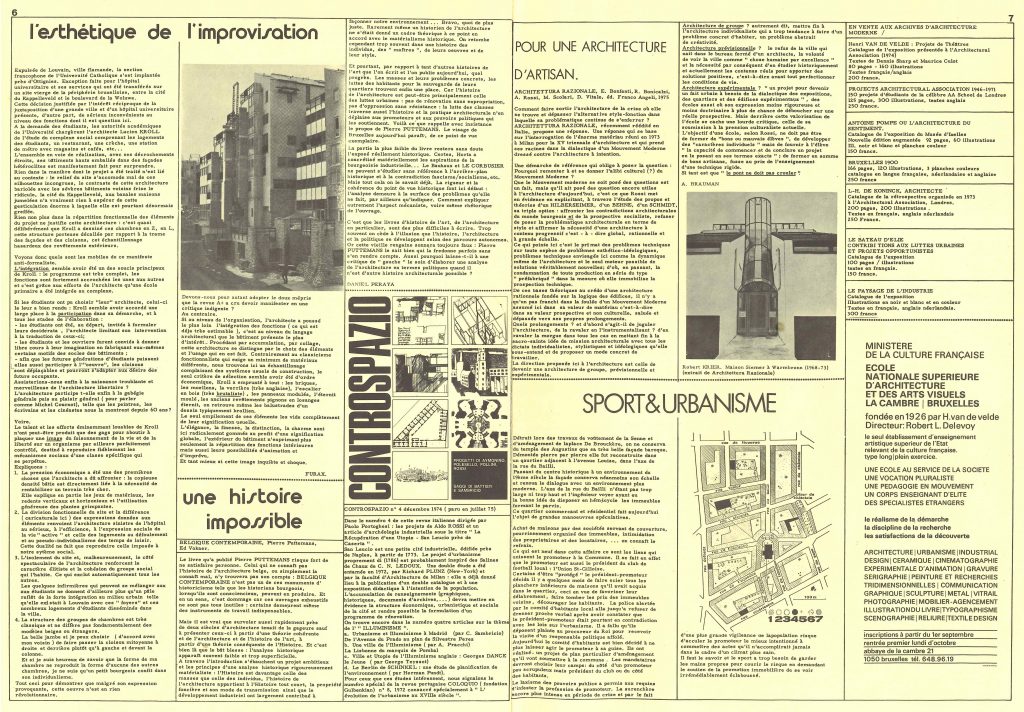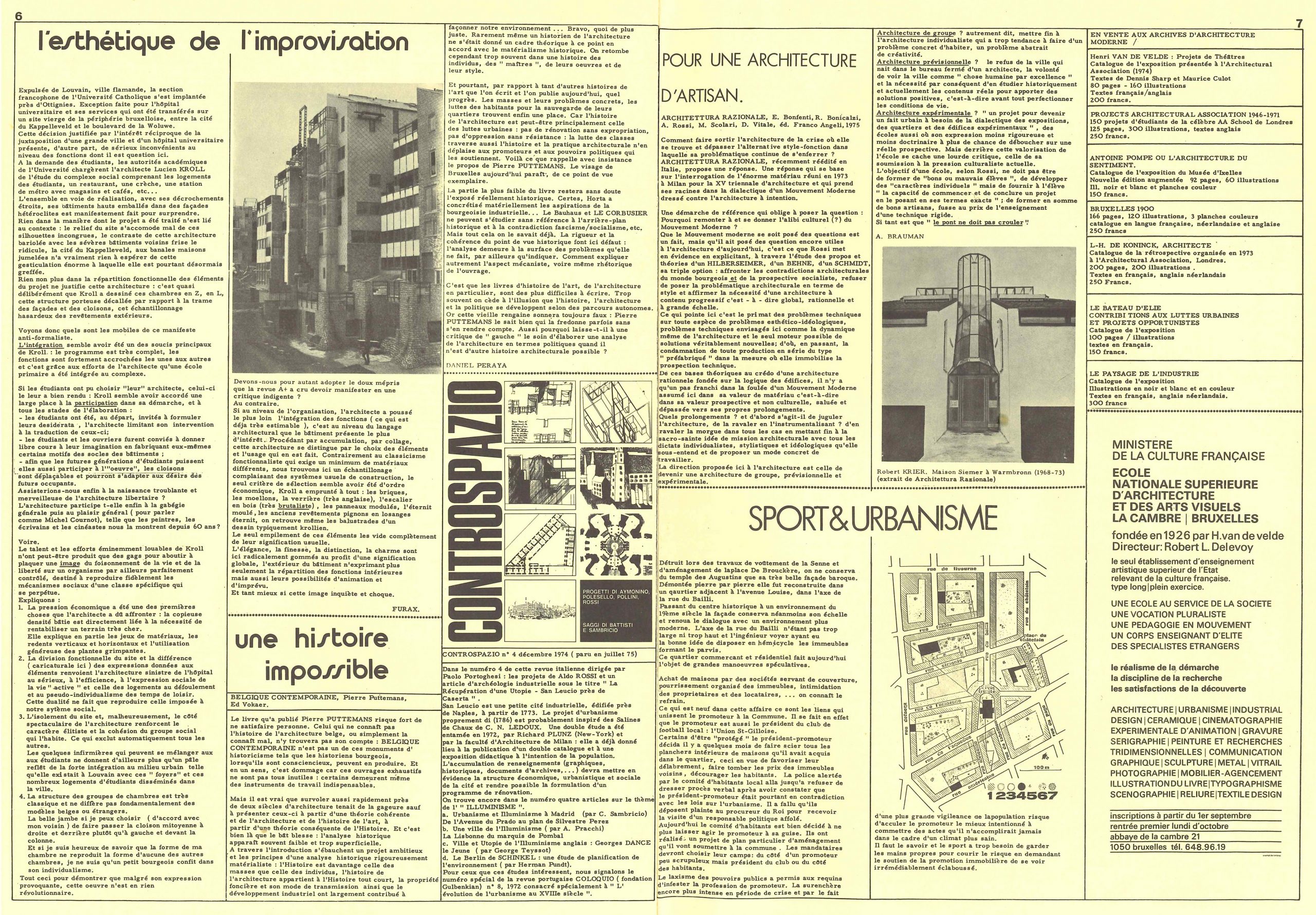MI-BRU: Italian Polytechnic Architecture and Culture in Brussels, the AAM/ARAU Case Study (1960-1990)
The MI-BRU research project aims to investigate the imprint and legacy of the Italian and Milanese polytechnic tradition in Belgium, and in particular in Brussels. The contribution of the Politecnico di Milano is traced by highlighting the architectural interactions between Italy and Belgium from the post-war period until today, with a specific focus on the 1960s and 1970s, enriched by an analysis of the works realized by Italian architects in the Belgian capital.
The journal Archives d’Architecture Moderne reflected a critical and militant approach, placing at the center the role of the archive in architecture between the 19th and 20th centuries. These efforts expressed a resistance against industrialization and productivism. The group around the AAM criticized the Modern Movement and bourgeois society, proposing traditional architectural solutions finding support and mutual influences in Italy, particularly in Milan, where debates, theories and sectors of architectural culture supported an intellectual opposition to what were considered “drifts” of the Modern Movement.
Over time, the AAM magazine went from a radical to a conservative phase, with Maurice Culot trying to assert an architectural style through a nostalgic ideological critique. The links with Italy included the publication of texts translated from Italian and critical discussions on the shared experiences between Belgium and Italy. The analysis will focus on mutual influences and cultural intersections, through the study of architectural works and interviews with relevant figures of contemporary architecture.

Methodology and tools
The research aims, with an interdisciplinary and historiographical approach, to consult, collect and analyse bibliographical and documentary material from historical archives (AAM, CIVA, ARAU, ULB, LOCI), alongside critical and comparative examples of architecture and interviews in order to obtain direct testimonies of oral history from protagonists and key players of the period in question but also from Italians who have influenced the Belgian context.
Project goals and expected outcomes
The project aims to contribute to the academic literature by providing a critical and up-to-date perspective on the influence of Italian architecture, with a particular focus on the role of Milan as a cultural and social catalyst in the Belgian context. The project focuses on the analysis of cultural and architectural dynamics between Italy and Belgium, with the aim of stimulating further research and debates on Italophilia that developed during the twentieth century and at the beginning of the new millennium. In this sense, the investigation will aim to explore cultural themes, design methodologies, critical attitudes, aesthetic panoramas and educational processes, placing architecture at the fulcrum of interdisciplinary dialogues between architects, academic institutions and specialized publications.
One of the main objectives of the project is to fill a historiographical gap regarding the evolution of cultural and professional relations between Italy and Belgium, with a particular emphasis on the La Cambre School in Brussels. In this context, the dynamics of the so-called “Brusselization” and post-Expo ’58 building speculation will be analyzed, highlighting the influence of Italian architects, in particular that of the Néo Rationalistes linked to the Archives of Modern Architecture. The research also considers the importance of the AAM, founded by Delevoy and others, to preserve the documents of Belgian architects and builders in a period marked by the erosion of historical heritage and increasing depoliticization.
The investigation will benefit from the collaboration of academics, researchers, grant holders, PhD students and students from the Politecnico di Milano and the Université libre de Bruxelles, with the aim of promoting international and interdisciplinary cooperation. The research includes a phase of historical reconstruction and critical analysis of Italian-Belgian cultural interactions, culminating in the production of a monographic publication. The results will also be presented in specialist articles and dedicated conferences. These studies will further consolidate the academic dialogue between the two countries and contribute to a deeper analysis of mutual cultural influences.



